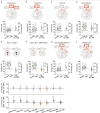Memory reactivation generates new, adaptive behaviours that reach beyond direct experience
- PMID: 39627275
- PMCID: PMC11615380
- DOI: 10.1038/s41598-024-78906-1
Memory reactivation generates new, adaptive behaviours that reach beyond direct experience
Erratum in
-
Author Correction: Memory reactivation generates new, adaptive behaviours that reach beyond direct experience.Sci Rep. 2025 Feb 10;15(1):4987. doi: 10.1038/s41598-025-89146-2. Sci Rep. 2025. PMID: 39929962 Free PMC article. No abstract available.
Abstract
Periods of rest and sleep help us find hidden solutions to new problems and infer unobserved relationships between discrete events. However, the mechanisms that formulate these new, adaptive behavioural strategies remain unclear. One possibility is that memory reactivation during periods of rest and sleep has the capacity to generate new knowledge that extends beyond direct experience. Here, we test this hypothesis using a pre-registered study design that includes a rich behavioural paradigm in humans. We use contextual Targeted Memory Reactivation (TMR) to causally manipulate memory reactivation during awake rest. We demonstrate that TMR during rest enhances performance on associative memory tests, with improved discovery of new, non-directly trained associations, and no change observed for directly trained associations. Our findings suggest that memory reactivation during awake rest plays a critical role in extracting new, unobserved associations to support adaptive behavioural strategies such as inference.
© 2024. The Author(s).
Conflict of interest statement
Declarations. Competing interests: The authors declare no competing interests.
Figures




References
-
- Inostroza, M. & Born, J. Sleep for Preserving and Transforming Episodic Memory. Annu. Rev. Neurosci.36, 79–102 (2013). - PubMed
-
- Buzsáki, G. & Fernández-Ruiz, A. Utility of the Idling Brain: Abstraction of New Knowledge. Cell178, 513–515 (2019). - PubMed
-
- Wagner, U., Gais, S., Haider, H., Verleger, R. & Born, J. Sleep inspires insight. Nature427, 352–355 (2004). - PubMed
-
- Craig, M., Ottaway, G. & Dewar, M. Rest on it: Awake quiescence facilitates insight. Cortex109, 205–214 (2018). - PubMed
MeSH terms
Grants and funding
LinkOut - more resources
Full Text Sources
Medical

